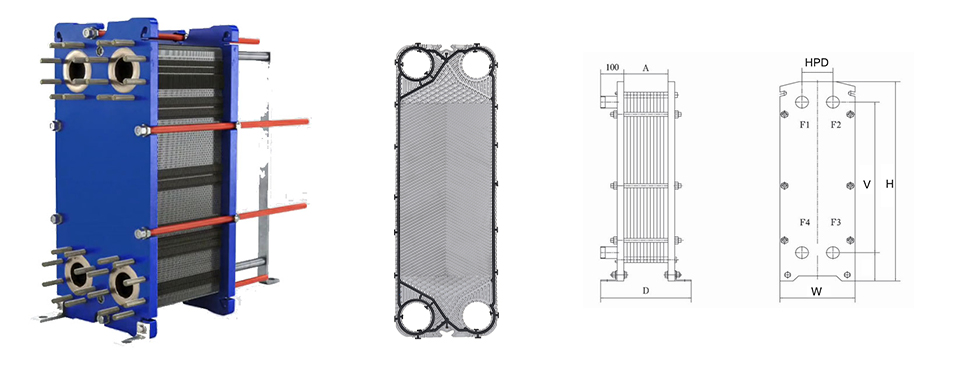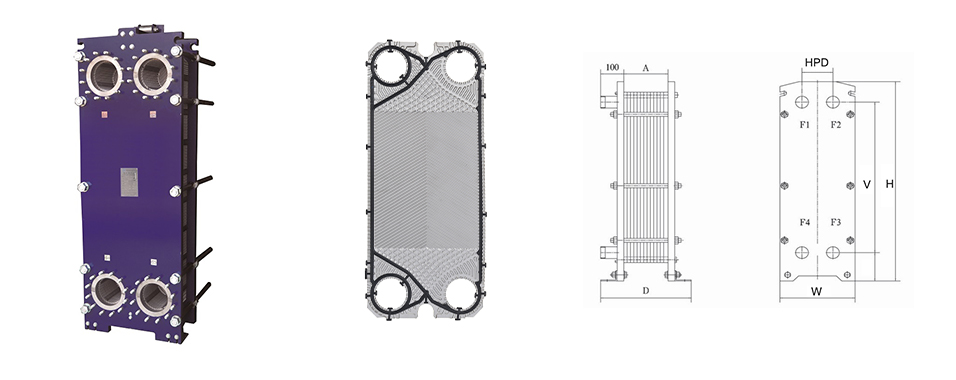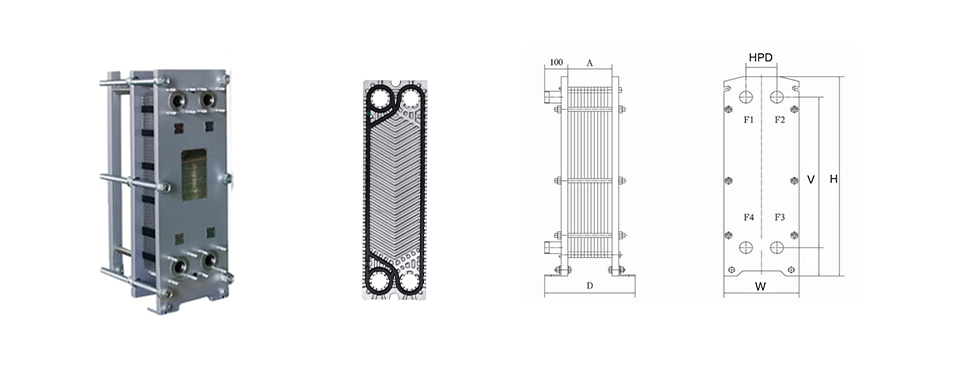PHE Working Principle--Plate Heat Exchanger Gaskets
What is a Plate Heat Exchanger?
The plate type heat exchanger is the most efficient type of heat exchanger with its low cost, flexibility, easy maintenance, and high thermal tranfer. VHX plate corrugations are designed to achieve turbulence across the entire heat transfer area. This produces the highest possible heat transfer coefficients with the lowest possible pressure drop, allowing for close temperature approaches. Subsequently, this leads to a smaller heat transfer area, smaller units and in some cases, fewer heat exchangers involved. This benefits the customer tremendously by requiring less space, reduced secondary flow rates and smaller pumps.
The VHX plate heat exchanger gaskets consists of a specific number of gasketed plates which are fixed between a top carrying bar and a lower guide bar. The plates are compressed by means of tie bars between a stationary frame plate (the head) and a moveable frame (the follower). Fluids enter the plate heat exchanger through frame connections and are distributed inbetween the plates. The flow through alternate passages between the plates is controlled by the placement of gaskets. These are available in single and multi-pass arrangements, depending upon the application.

The plate type heat exchanger is the most efficient type of heat exchanger with its low cost, flexibility, easy maintenance, and high thermal tranfer. VHX plate corrugations are designed to achieve turbulence across the entire heat transfer area. This produces the highest possible heat transfer coefficients with the lowest possible pressure drop, allowing for close temperature approaches. Subsequently, this leads to a smaller heat transfer area, smaller units and in some cases, fewer heat exchangers involved. This benefits the customer tremendously by requiring less space, reduced secondary flow rates and smaller pumps.
The VHX plate heat exchanger gaskets consists of a specific number of gasketed plates which are fixed between a top carrying bar and a lower guide bar. The plates are compressed by means of tie bars between a stationary frame plate (the head) and a moveable frame (the follower). Fluids enter the plate heat exchanger through frame connections and are distributed inbetween the plates. The flow through alternate passages between the plates is controlled by the placement of gaskets. These are available in single and multi-pass arrangements, depending upon the application.









